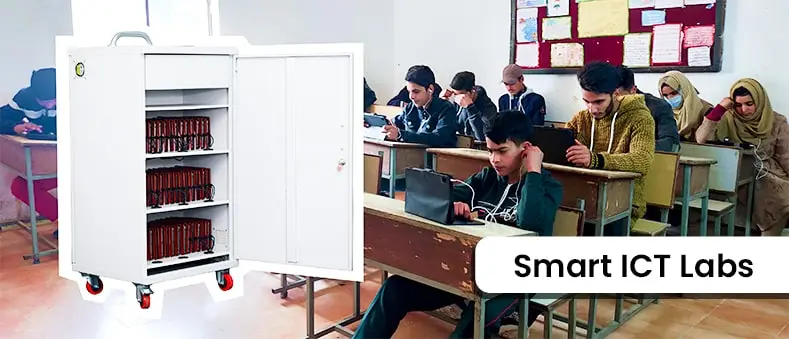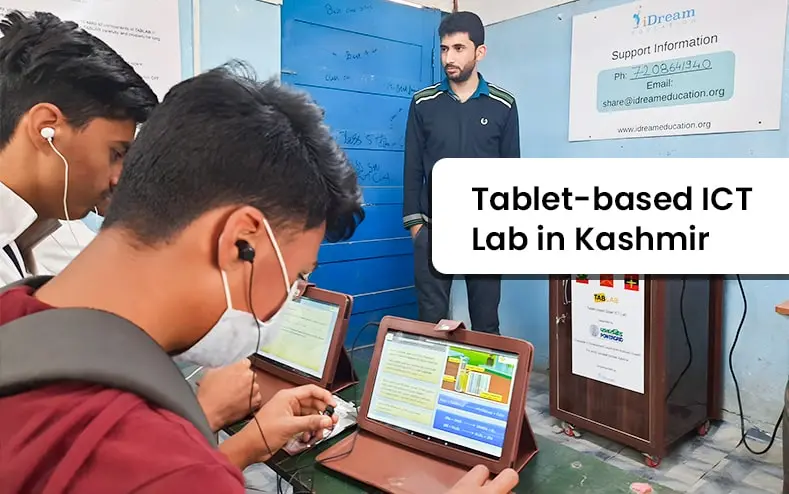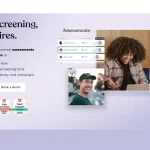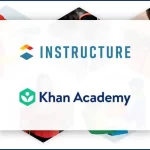For every country, “education” is the cornerstone of growth. It is essential for creating a competent labour force, a vibrant and inventive culture, and a strong and successful economy.
With a population of more than 1.42 billion, India is a vast and diverse nation. To realise this massive workforce’s full potential and to create a more prosperous, equitable, and stable society, India needs to ensure that every citizen has access to high-quality education.
With roughly 70% enrolments, government school education in India plays a significant role in educating the nation. The Right of Children to Free and Compulsory Education (RTE) Act, 2009, makes elementary education compulsory and free for all children between 6 and 14 years of age. It has also been instrumental in improving education in government schools and ensuring equitable access to education for children regardless of economic or social differences.
What Has Been Done & The Scope for Improvement In the Education System
The government has taken many progressive steps to mitigate the education gaps, especially in the public sector. The investments in Information and Communication Technology (ICT), Atal Labs, Artificial Intelligence (AI), and Design Thinking in education are encouraging innovation and skill development among students across the country. These initiatives are driving factors in improving the quality of education by providing students with access to modern technologies and helping them gain relevant skills through modern resources and pedagogies.
In the last decade or so, the government has announced and implemented numerous national initiatives and schemes to combat various educational challenges.
The District Information System for Education (DISE) revealed that the total enrolment in 2020-21 from primary to higher secondary school education was a little over 25.38 crore. Enrolment for boys was 13.17 crore, and that for girls was 12.21 crore. This was an increase of more than 28 lakhs over 2019-20. Many of the schools under the UDISE+ system had pre-primary classes. Total enrolment of all the schools in the UDISE+ system from pre-primary to higher secondary had crossed 26.44 crore in 2020-21.
At all the levels above primary, i.e., in upper primary, secondary and higher secondary, school enrolment has increased, showing an improvement in the ability of the system to retain more and more children over time.
Technology can help deliver quality and standardised education to such a large number of learners across the diverse geography of India. eLearning portals, digital libraries and online classrooms can greatly help to ensure quality education regardless of the location for all students.
The government is progressing toward these objectives, with much still to be done. To maximise quality education access for all children across India, it must continue to increase investments in education and its collaborations with schools, instructors, and households.
Govt. Policies & Initiatives That Have Moved the Needle

- NROER: National Repository of Open Educational Resources, started in 2013; this is a repository of open, multilingual e-learning material in video, audio, and interactive form for all subjects and grades accessible for all students.
- SWAYAM: Initiated in 2015 to address the teaching-learning gaps, this interactive learning platform hosts all learning courses till grade 9. Users can access online courses and learn through lectures, discussions, reading materials & self-assessments.
- DIKSHA 2017: DIKSHA stands for Digital Infrastructure for Knowledge Sharing. It is an open-source platform for teachers available in 12 languages. The platform can help teachers in accessing digital resources to learn and teach. The platform is ideal for creating assessments, e-resources, teacher training and more.
- NISHTHA: NISHTHA stands for National Initiative for School Heads’ and Teachers’ Holistic Advancement. It is a development program for teachers and school heads at the elementary level, launched in 2019. It aims to improve the quality of education at the elementary level by enhancing teaching skills, empowering school heads and promoting collaboration.
- Samagra Shiksha Abhiyan (SSA): It is an integrated scheme for preschool through 12th grade education designed to guarantee inclusive and equitable quality education at all levels of schooling. It encompasses the three schemes of Sarva Shiksha Abhiyan (aims to provide free and compulsory education to all children in India between the ages of 6 and 14), Rashtriya Madhyamik Shiksha Abhiyan (seeks to improve the quality of secondary education in government schools), and Teacher Education.
- National Digital Library of India (NDLI): It is a virtual repository of learning resources that has become a one-stop solution to access all sorts of learning resources across various languages from primary to post-graduate levels. NDLI is a free resource that offers search, browse, download, print, and share features making it an ideal resource for students nationwide.
- Atal Innovation Mission: In 2016, the NITI Aayog established India’s flagship program, the Atal Innovation Mission (AIM). This program aims to promote innovation and entrepreneurship at school, university, research, MSME, and industry levels. AIM has initiated three significant initiatives, namely, Atal Tinkering Labs (state-of-the-art labs in Indian schools that encourage curiosity and invention through 3D printing, fast prototyping, robotics, DIY kits, and more), Atal Incubation Centres (world-class incubators in universities, organisations, and corporations), and Atal Innovation Challenge (annual competition for innovators across the country).
and a few others like PM e-Vidya, SWAYAM Prabha, ePathshala and Vidya Daan 2.0.
Gaps Identified
Despite having the universal access to schooling at 97 per cent, the data revealed that the fundamental reading proficiency of youngsters nationwide has reverted to pre-2012 levels, undoing the gradual progress made in the years between. Drops are noticeable for both boys and girls in public and private schools in the majority of states.

Between 2018 and 2022, the proportion of third graders in public or private schools who can read at the level of Grade 2 fell from 27.2% to 20.5%.
Across the country, the percentage of students in Grade 5 in public or private schools who can at least read a text at the Grade 2 level dropped from 50.5% in 2018 to 42.8% in 2022.
Although declines in basic reading comprehension are also seen among Grade 8 pupils, they are less pronounced than Grade 3 and Grade 5 trends. The figure changed from 73% in 2018 to 69.6% in 2022.
The Indian education system has the potential to grow significantly in the coming years. With a large young population, the government is expanding its ventures in the education sector, and private entities are investing in too. Sincere efforts by EdTechs, government eLearning portals, schemes to retain students, provide benefits to the poor and underprivileged, and many other initiatives have been taking place to improve the quality, reach and accessibility of education across the country.
WHAT NEXT?
To dive deep into the state of public schools despite so many initiatives and policies, we chatted with Rohit Prakash, Co-founder iDream Education, who also identified the lack of literacy levels among the school-going population and shared some ideas on the way forward.
Improving Access and Personalisation for Last-Mile Learners
- Learning Gap Increased
- Massive penetration of Technology
The rate of penetration of digital devices has increased and their acceptance has also increased. SWAYAM and DISKSHA have gained more prominence.
However, effective utilization of these resources is still not happening. Rural and Government Schools are leading in aspects of lack of access and personalization. There has to be an increased focus on capacity building of teachers and Quality of Education.
Also, lack of an integrated platform that combines OER (Open Educational Resources) such as DIKSHA, AWSAR (Science & Technology) as well as practice has left a vacuum. Therefore, iDream Education has made its learning management platform (iPrep) – device and internet agnostic and while it works on most other operating systems, it is android – based to cater to the natural psychology of the teachers and students and it combines content & digital books (curriculum, and life skills), learning aids (notes & videos), practice, assessments, monitoring, reporting into one single platform. Additionally, a Personalized Adaptive Learning solution has been developed, which was mainly a result of the need to bridge the learning gap post COVID. It now serves to be an intervention that will not only bridge the learning gap but also allow learners to gain mastery over topics in a non judgemental learning environment.

According to Rohit, the key game changer is going to be Smart ICT labs where students can come and access the curriculum and other content in the absence of high budgets involved in giving tablets to every student.
And here are 4 reasons why:
- Simple, cost effective & Easy to set up without any furniture or infrastructure
- All curriculum content is available in tablets in the lab, locally stored in the Device’s SD card and usable without Internet
- Multiple students can access their profiles in any tablet in the lab
- Central reporting of data
He says, “We have also found Smart Classes when combined with mobile app access (we implement some of our projects with a combination of iPrep Digital Class and iPrep Mobile app for students), brings desired grade level learning outcomes in learners. This is due to the fact that students are able to revise & practice what they learn in a familiar environment.” We saw this first hand in one of our implementations where girls from school in UP who were provided the learning app came to classes better prepared gaining appreciation from teachers and themselves were more confident and happy while learning at school.
A 4 Pronged Approach to Bring Immediate & Significant Improvement
- More Funding for Improved Infrastructure: To meet the public sector’s need for quality teachers, infrastructure, access to education in rural areas, and overall quality of education, the Indian government needs to spend more on education. In recent years, the Indian government has been on the right path. We have seen higher education spending recommended by NEP2020, and we have also seen an increase of 8% in the education budget compared to the previous year, as per Union Budget 2023.
- Focus on Equality: In India, children from affluent households have far greater access to quality education than children from impoverished families. Various factors, such as the number of schools in the neighbourhood, associated cost of education, the calibre of public institutions (including the availability of adequate infrastructure), availability and access to scholarships and other forms of financial assistance, contribute to this gap.
- Staying Relevant: The education system and policies need to keep pace with the changing world and workforce requirements of the 21st century. The curriculum needs to be up to date, with sufficient emphasis on skills like critical thinking, problem-solving, and creativity. We see a positive approach in this direction through the government’s focus on implementing AI and Design Thinking Curriculums, ICT Labs, Atal Tinkering Labs, etc., in public schools.
- Improving Teaching Quality & Resources: India cannot grow if Indian institutions have a substandard calibre of instruction. A dedicated force is needed to improve the flow of qualified instructors, a balanced student-to-teacher ratio, and access to digital resources. It is essential that we build a pool of quality teachers with the help of in-depth training that can retain students’ interest in education through an interactive and engaging approach to instruction. Another key element is access to technology-assisted pedagogy that allows for high-quality teaching and learning at a scale. Also, Indian government schools must include teacher training, professional development opportunities, and increase teacher pay to sustain the presence of quality teachers.
Further, data collection is important to measure the impact, especially at scale. There is a need to bring schools’, students’ and teachers’ data under UDISE – a government initiative – for the entire nation. Currently, UDISE holds data of more than 14.89 lac schools, 95 lac teachers and 26.5 crore children. A centralised data repository will help measure results, progress and impact of all public and private sector initiatives and schemes and will help better assess the growth and literacy at scale.
Key Levers: CSR Initiatives and NGOs
CSR Initiatives, NGOs and NPOs, on one hand, can assist schools in improving their curriculum, instructional methods, and management practices by providing them with expert technical assistance through partners. On the other hand, they can support edtech and other educational organisations through large scale implementations in government schools to bring impact at scale.
Additionally, the founder of Wipro, Premji, has donated over $25 billion to education in India, making him the country’s largest philanthropist. The Azim Premji Foundation supports various education initiatives, including teacher training, school infrastructure, and scholarships. Dhirubhai Ambani has donated over $10 billion, focusing on educational technology and vocational education. Nandan Nilekani, co-founder of Infosys, has donated over $5 billion, focusing on improving access to quality education for underprivileged children. Kiran Mazumdar-Shaw, chairman and managing director of Biocon, has donated over $2 billion to education, focusing on women and girls’ leadership in education.
Some examples of Public – Private Partnership: Case Studies That Caught Our Eye
EdTech can reform and reshape rural Indian education by enhancing access to resources and digital libraries, personalisation, teacher training, engagement tools, vernacular approaches and affordability. Well-planned and executed programs can have a game-changing impact on rural education. A few case studies that come out as evidence of the positive impact of technology integration are:
- Smart Classrooms were set up in East Jaintia Hills, Meghalaya, to improve Learning outcomes and bridge the historical learning gap in students of 50 rural Government Schools.
- Set up of ICT Labs with Tablet-based Learning for students in 10 schools of Army Goodwill Schools, Kashmir, that have students from economically humble backgrounds.
Takeaway
Due to the pandemic, many government and private organisational plans and initiatives lost momentum, but we will need to cover up the gap. There is a need for the government, social sector and EdTech organisations to play their respective roles and build a fit-for-purpose ecosystem to realise the true potential of all the initiatives and drive impact at scale.
The NEP 2020 identifies and emphasises technology’s role in addressing critical educational challenges. It states that “there is a need to invest in the creation of open, interoperable, evolvable, public digital infrastructure in the education sector that can be used by multiple platforms and point solutions, to solve for India’s scale, diversity, complexity and device penetration. This will ensure that the technology-based solutions do not become outdated with the rapid advances in technology” (NEP para 24.4.b, 2020; MHRD).
Indian education is at the cusp of serious transformation. If the vision of NEP 2020 is realised, there will be a massive positive change at all levels. The population burden is huge, but the government has created clear schemes and guidelines, and much work has already been initiated.
There is an urgent need to understand these schemes and their goals and for public-private partnership, alignment in government and CSR/development sector initiatives to achieve an additive effect and output. Samagra Shiksha Abhiyan clearly sets goals for us. The focus must be on Experiential Teacher Training & Teacher Enablement, Digitisation of Learning and clear efforts to bridge historical learning gaps in students and equip them with personalised & quality digital learning.


